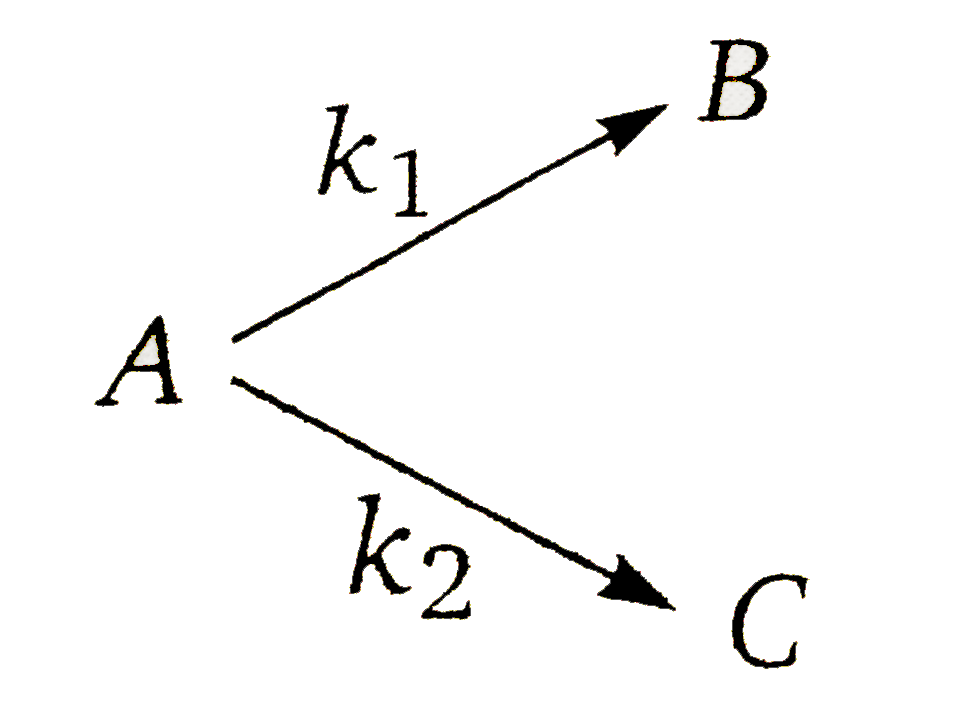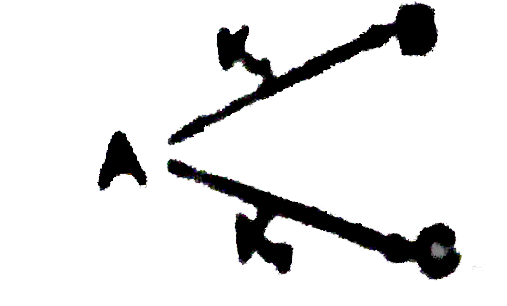The rate constant for two parallel reactions were found to be 1.0×10−2dm3mol−1and3.0×10−2dm3mol−1s−1. If the corresponding energies of activation of the correspoing energies of activation of the parallel reaction are 60.0 Kj mol−1 and 70.0 KJ mol−1 respectively ,what is the apparent overall energy of activation ?
130.0KJmol−1
67.5KJmol−1
100.0KJmol−1
65.0KJmol−1
The correct Answer is:B
Topper's Solved these Questions
- CHEMICAL KINETICSBOOK - GRB PUBLICATIONCHAPTER - CHEMICAL KINETICSEXERCISE - Nuclear Chemistry
63 Videos
- CHEMICAL KINETICSBOOK - GRB PUBLICATIONCHAPTER - CHEMICAL KINETICSEXERCISE - Reasoning Type
14 Videos
- CHEMICAL KINETICSBOOK - GRB PUBLICATIONCHAPTER - CHEMICAL KINETICSEXERCISE - Mechanism of Reactions
45 Videos
- CHEMICAL BONDING-IBOOK - GRB PUBLICATIONCHAPTER - CHEMICAL BONDING-IEXERCISE - Subjective Type
120 Videos
- COORDINATION COMPOUNDSBOOK - GRB PUBLICATIONCHAPTER - COORDINATION COMPOUNDSEXERCISE - SBJECTIVE TYPE
98 Videos
Similar Questions
Consider the reaction.

The rate constant for two parallel reactions were found to be 10−2dm−2mol−1s−1 and 4×10−2dm−3mol−1s−1 . If the corresponding energies of activation of the parallel reaction are 100 and 120 kJ/mol respectively, what is the net energy of activation (Ea) of A
View SolutionThe activation energy for the forward reaction X→Y is 60kJmol−1 and ΔH is −20kJmol−1. The activation energy for the reverse reaction is
View Solution
Knowledge Check
The rate constant for two parallel reactions were found reactions were found to be 1.0×10–2 dm3 mol−1s–1and3.0×10–2 dm3 mol–1s–1. If the corresponding energies of activation of the parallel reactions are 60.0 kJ mol–1and70.0 kJ mol–1 respectively, what is the apparent overall energy of activation ?
A130.0 kJ mol−1B67.5 kJ mol−1C100.0 kJ mol−1D65.0 kJ mol−1Consider the reaction.

The rate constant for two parallel reactions were found to be 10−2dm−2mol−1s−1 and 4×10−2dm−3mol−1s−1 . If the corresponding energies of activation of the parallel reaction are 100 and 120 kJ/mol respectively, what is the net energy of activation (Ea) of AA100 kJ/molB120 kJ/molC116 kJ/molD220 kJ/molThe activation energy for the forward reaction X→Y is 60kJmol−1 and ΔH is −20kJmol−1. The activation energy for the reverse reaction is
A40kJmol−1B60kJmol−1C80kJmol−1D20kJmol−1
The energy of activation of a reaction is 140kJmol−1 . If its rate constant at 400 K is 2.0×10−6s−1, what is the value at 500 K
View SolutionThe rate constant for a reaction at 500∘C is 1.6×103M−1s−1 . What is the frequency factor of the reaction if its energy of activation is 56 kJ mol−1
View SolutionThe substance undergoes first order decomposition.The decomposition follows two parallel first order reactons as :

K1=10−2sec−1andK2=4⋅10−2sec−1
If the corresponding activation energies of parallel reaction are 100 and 120 kJ mol−1 then the net activation energy of A is/are:
View SolutionA catalyst lowers the activation energy of the forward reaction by 10 kJ mol−1. What effect does it have on the activation energy of the backward reaction?
View SolutionThe substance undergoes first order decomposition.The decomposition follows two parallel first order reactons as :

K1=10−2sec−1andK2=10−2sec−1
If the corresponding activation energies of parallel reaction are 100 and 120 kJ mol−1 then the net activation energy of A is/are:
View Solution
